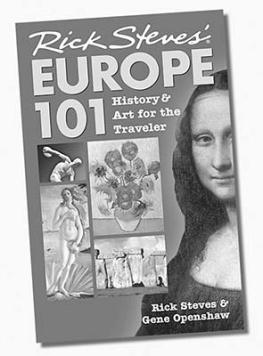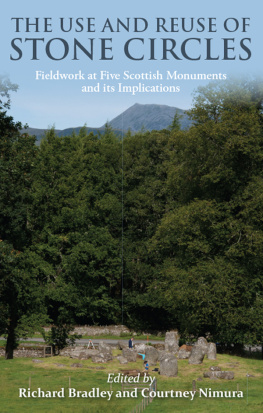Orkney


For Guille,
who has been with me throughout the writing of this book
This eBook edition published in 2013 by
Birlinn Limited
West Newington House
Newington Road
Edinburgh
EH9 1QS
www.birlinn.co.uk
First published in 1998 by Birlinn Limited, revised edition published in 2011
Copyright Caroline Wickham-Jones 1998, 2007, 2011 and 2013
The moral right of Caroline Wickham-Jones to be identified as the author of this work has been asserted by her in accordance with the Copyright, Designs and Patents Act 1988.
All rights reserved. No part of this publication may be reproduced, stored or transmitted in any form without the express written permission of the publisher.
eBook ISBN: 978-0-85790-591-8
Print ISBN: 978-1-78027-001-2
British Library Cataloguing-in-Publication Data
A catalogue record for this book is available from the British Library
Version 1.0

LIST OF ILLUSTRATIONS
All illustrations credited RCAHMS are Crown Copyright: Royal Commission on the Ancient and Historical Monuments of Scotland.
All illustrations credited Davidson & Henshall are by kind permission of J. L. Davidson and A. S. Henshall, The Chambered Cairns of Orkney (Edinburgh University Press 1989).
All illustrations credited MacGibbon & Ross are taken from David MacGibbon and Thomas Ross, The Ecclesiastical Architecture of Scotland (facsimile edition The Mercat Press 1991).
All illustrations credited MacGibbon & Ross ii are taken from David MacGibbon and Thomas Ross, The Castellated and Domestic Architecture of Scotland (The Mercat Press).
LIST OF PLATES
LIST OF MAPS
ACKNOWLEDGEMENTS
Many people have helped with the writing of this book. First and foremost I should like to thank all those people in Orkney who, over many years, have provided facilities, advice, friendship and encouragement for my various trips, whether I was working for others, carrying out my own research, or on holiday. A great debt is owed to Ann Brundle and Daphne Lorimer in particular they have always been most welcoming and helpful, and took on the mega-task of reading through, and commenting on, a version of the completed text. Sally Foster was also very helpful in reading and advising on various chapters, and Heather James of Glasgow University Archaeological Research Division advised over the excavations at Skaill House. All of these people have helped to straighten out various misconceptions, errors and omissions as well as tightening and considerably improving the final message. The staff of the National Monuments Record of Scotland in Edinburgh, in particular Iain Fraser, were very helpful in my quest for plans and should be thanked for all their time and advice. The Planning Department in Kirkwall helped with missing site references. Needless to say, any errors that remain are the fault of the author.
Finally, my grandmother, though she died long before I was born, introduced me to Orkney by collecting postcards when she was stationed there in the First World War. The collection was a source of fascination during my childhood and I have it by me still.
Illustrations
Every effort has been made to trace the copyright holders and we apologise in advance for any unintentional omissions. We would be pleased to insert the appropriate acknowledgment in any subsequent edition of this publication.
Useful Addresses
The following organisations and individuals will be able to provide further information on any aspects of archaeology and history, in Orkney or beyond.
Council for Scottish Archaeology
Causewayside House, 160 Causewayside, Edinburgh EH9 1PR
Tel: 0131 668 4189
www.scottisharchaeology.org.uk
Friends of Orkney Archaeological Trust
PO Box 6213, Kirkwall KW15 1YD
www.orkneycommunities.co.uk/FOAT/index.asp
Historic Scotland
Longmore House, Salisbury Place, Edinburgh EH9 1SH
Tel: 0131 668 8600
www.historic-scotland.gov.uk
Island Archaeologist
Archaeology Unit, Orkney College, Kirkwall KW15 1DH
The Orkney Museum
Tankerness House, Broad Street, Kirkwall KW15 1DH
www.orkney.org/museums.tankhouse.htm
Kirkwall Tourist Information Centre
6 Broad Street, Kirkwall KW15 1NX
Tel: 01856 872856
www.visitorkney.com
Orkney Heritage Society
c/o The Orkney Museum (see above)
Royal Commission on the Ancient and Historical Monuments of Scotland (RCAHMS)
John Sinclair House, 16 Bernard Terrace, Edinburgh EH8 9NX
Tel: 0131 662 1456
www.rcahms.gov.uk
Stromness Tourist Information Centre
Ferry Terminal Building, The Pier Head, Stromness,
Orkney KW16 3BH
Tel: 01856 850716
www.visitorkney.com
PREFACE
This book is designed to provide information for those who visit Orkney and would like to know more about its history and how the developments of the past are reflected by the monuments that survive today. As I do not believe that archaeology ever stops (we are now creating the archaeological sites of tomorrow), I have tried to bring it reasonably up-to-date, and this, the third edition, includes a new final chapter to outline the considerable amount of research that has gone on in Orkney since the book was first published in 1998.
In the space available it is not possible to provide more than a gloss of Orkneys fascinating history, but there is a reading list at the end for those who would like to follow up particular themes in more detail. In addition, Historic Scotland, Orkney Islands Council, and others regularly bring out information leaflets and short publications on particular sites and periods and these are generally available in the islands and from centralised information centres. Regular visitors to Orkney will also find a visit to the Orkney Room in Kirkwall Library very rewarding.
Readers will note that distribution maps have not been provided for every chapter in the book. This is for two reasons: because of the difficulty of portraying the wealth of archaeological sites in Orkney; and because of the inherent weaknesses of a distribution map when used to show the density of sites. Orkney is full of archaeological sites, many of which have not been securely dated. For some periods, such as the Neolithic, the map would be so dense that it would be difficult to make sense of, while for other periods it might appear very sparse. This is more a reflection of the problems of identifying sites to particular periods rather than of the lack of human activity in any one period. In order to be complete, any series of archaeological distribution maps of Orkney would really also need one of the known but undated sites, in order to balance the picture, and this would be a dense map indeed!
Furthermore, distribution maps are more a reflection of the current progress and locations of archaeological work rather than of the sites of known settlement or burial in the past. The amount of on-going archaeological work in Orkney means that distribution maps go out of date very quickly as new sites are discovered. Every year there is survey and excavation work that uncovers new information from all periods, and it only takes the arrival of an archaeological team to work on a previously un-investigated island in order to alter the picture dramatically. Readers should remember this when studying the maps that are presented






















